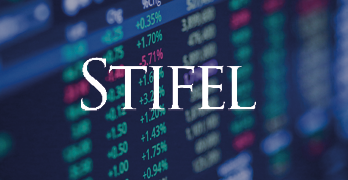“Ladies and gentlemen, we’re about to experience some turbulence. Please fasten your seatbelts”

Weeks 10-12 have brought some stability in global air cargo rates, particularly on transpacific lanes. On average, the core international basket indices saw only single-digit-percent sequential fluctuations versus the golden week period. But such stability may be fleeting. As we’ve pointed out in previous installments, we expect volatility in global air cargo spot rates to be amplified by the structural lack of capacity created by the void of wide-body belly capacity in the marketplace. That goes for both expected seasonal volatility, and the seemingly endless string of exogenous supply chain shocks.
On a year-over-year basis, comps are beginning to flatten out as we lap the one year anniversary of worldwide demand market shutdowns in response to the pandemic. Those shutdowns, of course, ground passenger flying (and any lower deck capacity that came along with it) to a standstill. As a result, Week-12 PVG to Europe and North America rates were within a couple percentage points of year-ago levels. Compare that to the first couple months of the year when rates were up closer to 2x or even 3x their 2020 equivalents. But at US$4.06 and US$5.58, both lanes are still 50-60% higher than their respective pre-pandemic mean levels.
So, the comparables begin to look funny as we enter the second quarter. But we do not see much on the horizon to alter the fundamental supply-demand dynamic and cause a cooling in near term rates.
Our indicators suggest that retail inventories remain near record lows and global demand continues to accelerate. U.S. government stimulus should supercharge retail demand flows on Eastbound Transpacific routes.
Our indicators suggest that retail inventories remain near record lows and global demand continues to accelerate. U.S. government stimulus should supercharge retail demand flows on Eastbound Transpacific routes. And progressive re-opening and vaccination in the U.S. could drive activity in the realm of pharmaceuticals and even fresh foods. But among the common airfreight commodity classes, we think high tech and ecommerce-related shipments are leading the way. It’s of little surprise that freight growth has been strongest on North America-bound lanes. But according to the latest IATA data, Europe is catching up, too.
Regarding capacity, global cargo and passenger flying have recovered progressively since the 2Q20 trough. But we estimate that they are still down around 20% and 60% from baseline levels, respectively.
Regarding capacity, global cargo and passenger flying have recovered progressively since the 2Q20 trough. But we estimate that they are still down around 20% and 60% from baseline levels, respectively. On the cargo side, the pace of conversions and incremental freighter deliveries have helped to augment global capacity, but they can only move so fast, in our view. And on the passenger side, while we do anticipate a meaningful recovery this year, we believe that recovery happens must sooner with domestic leisure activity than it does with international long-haul. And international long haul is ultimately the more meaningful segment for global supply chains.
Finally, we would be remiss in failing to address the Ever Given beaching in the Suez Canal. The implications of that event, in our view, will continue to reverberate through the supply chain for weeks if not months to come. And it is illustrative of the broader freight backdrop. In a more normalized environment, there might be more of a shock absorber for delays and more supply pressure blow-off valves. But global freight capacity is almost universally scarce right now, across geographies and across modes, in our view, which further reduces optionality for shippers.
About Bruce Chan, Vice President – Global Logistics, Stifel
Bruce Chan joined Stifel in 2010. Based out of the Miami office, Mr. Chan is a Vice President and Senior Research Analyst covering Global Logistics and Future Mobility. Bruce Chan can be reached at chanb@stifel.com. Opinions expressed are subject to change without notice and do not take into account the particular investment objectives, financial situation, or needs of individual investors. For more information and current disclosures for the companies discussed herein, please go to the research page at www.stifel.com.
©2021 by J. Bruce Chan.